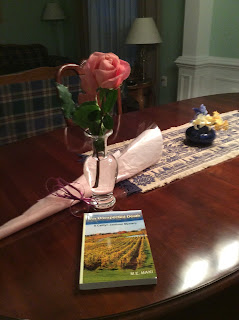I just finished reading Writing with Quiet Hands by Paula
Munier. It is a wonderful book that I can recommend to all writers. It was towards the end that Ms. Munier
provided me with an aha moment. She talked about the importance of carrying the
theme through the book, and about using metaphors for that theme.
I had never thought about
it that way. I credit beginners luck for the fact that I successfully accomplished
keeping the plot theme seamless in my first book, and I suspect beginners luck
continues in my second.
I just printed out the first
rough draft of my second Caitlyn Jamison mystery and now ask myself – what is the theme of this book? What
message do I want the reader to take away? Have I been consistent with
metaphors? Is the interwoven subplot consistent? Does it need to be?
And further, has my
protagonist driven the story or has the story driven or overtaken her? I think the second is
closer to the truth, so some rewriting, redirecting is in order.
This second go-around has
provided insights that I didn’t have in the first book. I realize now that my
books are character driven. The plot line I envisioned at the start of the
process has changed drastically over the development of the book. That’s
because the characters I created developed their own
personalities and passions.
I allowed my characters
freedom to explore their world, and in doing so they drove the plot line and I
am very thankful they stayed true to the theme.
I have much work ahead of
me to tighten the manuscript and make sure my protagonist is front and center. And time to think about answering the above questions. What exactly do I want my readers to take away from this second book?











